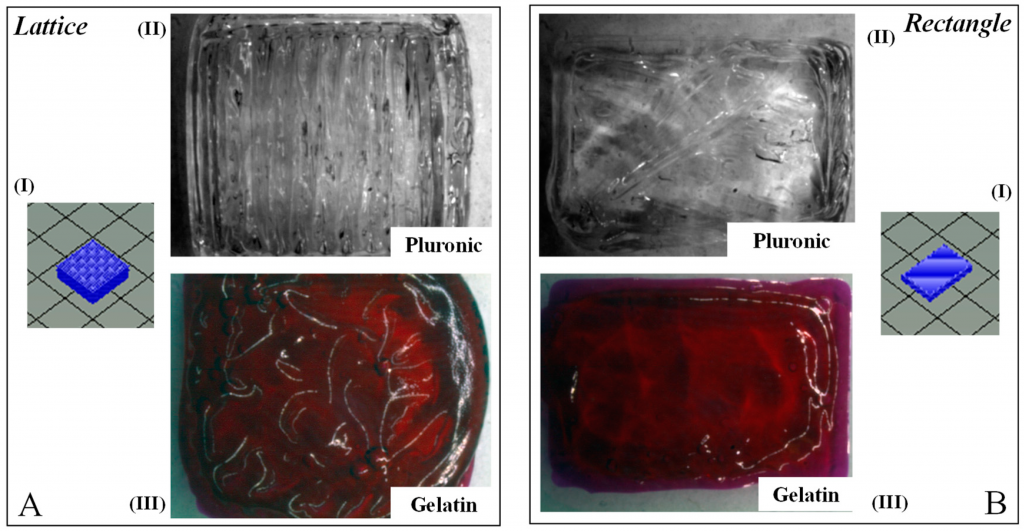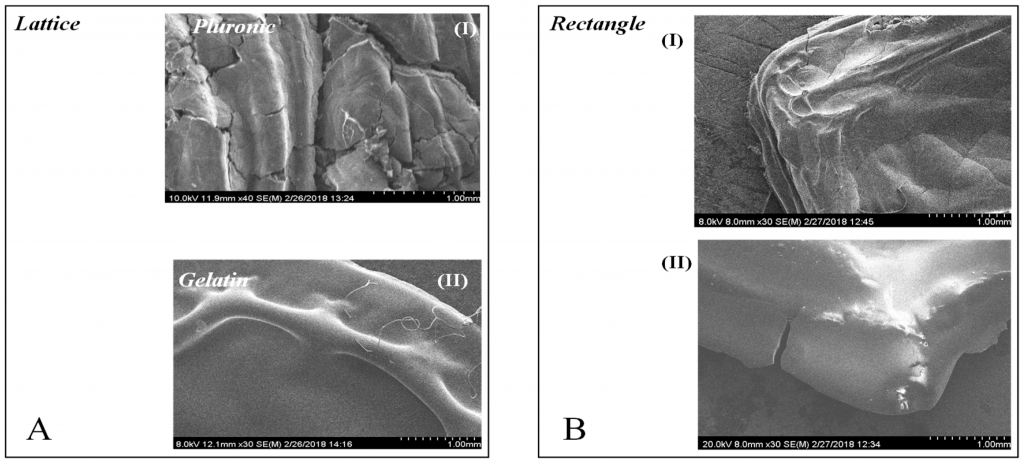Bioprinting is not a simple endeavor – if it were, we would likely be transplanting 3D printed organs by now. It’s a delicate process that requires a number of factors to be in place, including bioinks that are both printable and biocompatible, and proper scaffolds. In a paper entitled “A Comparative Study of a 3D Bioprinted Gelatin-Based Lattice and Rectangular-Sheet Structures,” a group of researchers compares scaffolds with lattice mesh geometries to more traditional flat rectangular sheets.
“We hypothesised that the experiments performed as a part of this study would help us to observe considerable differences between the two structures, i.e., lattice and rectangle, and also open up the possibility of significantly enhancing the design of a 3D bioprinted construct for engineering cardiac tissue-on-a-chip, using bioprinting,” the researchers state.
The researchers used furfuryl gelatin (f-gelatin) as a base for their bioink, which they seeded with mouse mesenchymal stem cells. They used an ALLEVI 2 bioprinter to print the ink into two different structures – a lattice and a rectangular sheet. Rheological characterization of the bioink was conducted, and the bioprinted structures were cultured in an incubator. A live/dead cytotoxicity assay was performed, and the texture of the lattice was analyzed by scanning electron microscopy.
“The SEM cross-sectional image of the gelatin lattice revealed a highly organized, striated, patterned, and networked structure in comparison to the loosely networked and largely porous rectangular-sheet cross-section SEM, as reported in our previous study,” the researchers explain. “Porosity and pore-size are crucial to ensure cell colonization of the scaffold, deposited using bioprinting. Likewise, SEM micrographs showed a homogeneous distribution of equal sized pores within the entire area scanned and imaged….The average apparent porosity of this lattice structure was estimated to be about 50% compared to 21% for the rectangular-sheet. The results led us to conclude that although the mean pore size was significantly reduced by printing in the form of a lattice, the inherent design of the lattice allowed pores to be of a similar size and to be homogenously distributed throughout the entire structure, compared with the rectangular-sheet.”
Swelling behavior of the gels was monitored to study the hydration dynamics of the crosslinked hydrogel structure. Cell proliferation was assessed and flow cytometry was analyzed.
Results of the testing showed that the lattice structure was more porous than the flat rectangular sheet. It also exhibited a lower degradation rate.
“Further, the lattice allowed cells to proliferate to a greater extent compared to the rectangular-sheet, which initially retained a lower number of cells,” the researchers state. “All of these results collectively affirmed that the lattice poses as a superior scaffold design for tissue engineering applications.”
A scaffold is literally a foundation to build upon in bioprinting, and having an effective scaffold is key in any bioprinting application. Cells rely on a strong scaffold in order to survive and proliferate. A printable, biocompatible ink is also crucial for cells to be able to grow into tissue. The researchers find in this study that lattice structures are superior to rectangular sheets, which could mean the difference between success and failure in future applications.
Authors of the paper include Shweta Anil Kumar, Nishat Tasnim, Erick Dominguez, Shane Allen, Laura J. Suggs, Yoshihiro Ito, and Binata Joddar.
Discuss this and other 3D printing topics at 3DPrintBoard.com or share your thoughts below.




49 Replies to “3D Bioprinting: Comparing Lattice Scaffolds with Traditional Rectangular Sheets”
Comments are closed.